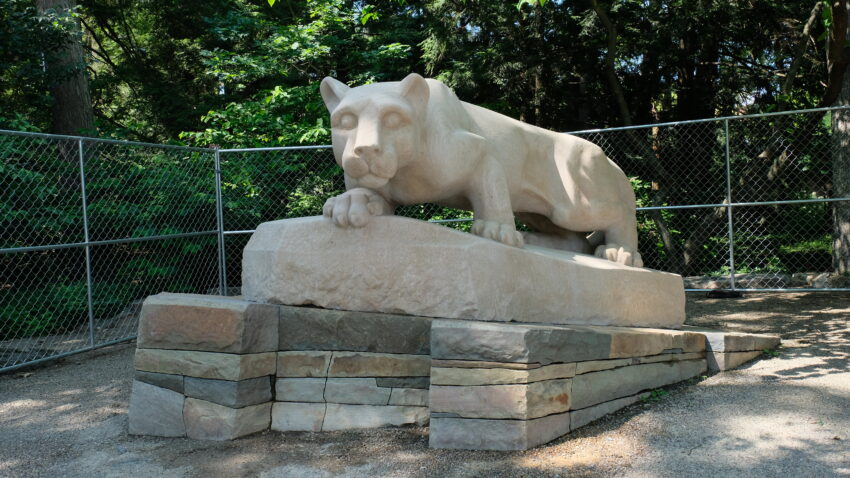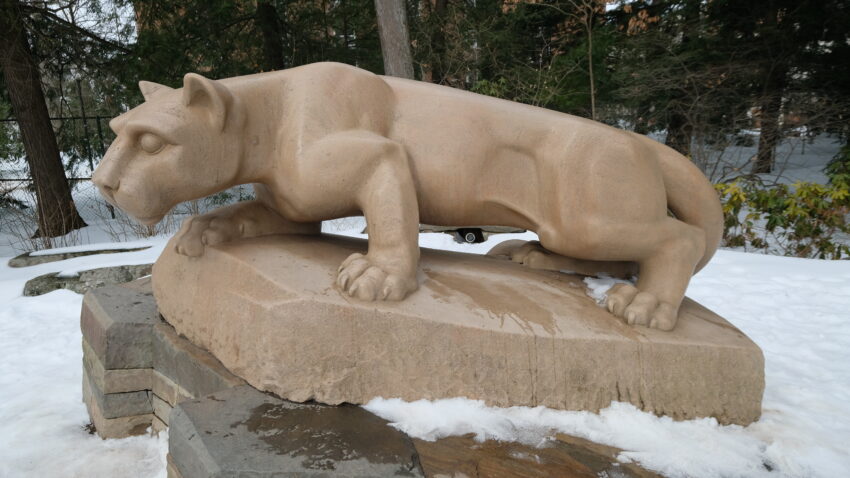
The Nittany Lion Shrine is located on the University Park campus of the prestigious Pennsylvania State University. The sculpture features a boldly contoured limestone mountain lion poised to pounce from its sandstone base. It was carved by sculptor Heinz Warneke and installed in 1942 for the Class of 1940. The importance to the university of the Nittany Lion mascot and this carved representation is telling by the use of the title “shrine.” Sadly, the lion has a history of being the target of sports rivalries, and by 2020, a thorough conservation treatment of the Nittany Lion Shrine was needed to replace missing components and to improve its overall appearance and structural integrity.

The conservation of the Nittany Lion Shrine began with an assessment by Marcin Pikus, Conservator of Stone Sculpture and Architectural Features, in the winter of 2019. The sculpture was in relatively good condition minus some previous vandalism and exposure to the outdoor elements. The sculpture and base also had biological growth.
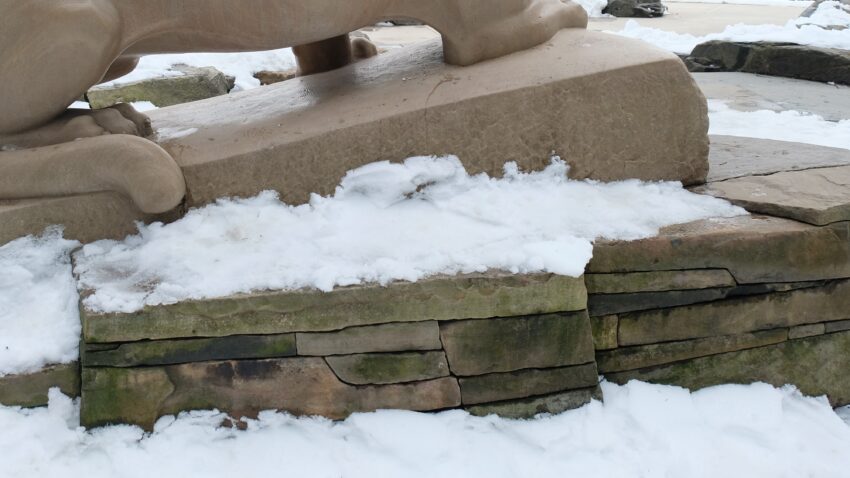
At some point the sculpture was also coated with a silicone material, giving it an unnatural shine. Faint stains and splashes of orange paint from previous vandalism were observed. A previously repaired ear and damaged claws, and some other minor losses of the limestone were also evident.
Pikus developed a conservation treatment plan for the Nittany Lion Shrine based on his findings and scheduled the project for warmer weather. He also enlisted the help of Master Stone Carver, Nicholas Fairplay, of Fairplay Stone Carvers, L.L.C.
Before surface treatment began, rubber molds of the right ear and hind paw were taken from both the original sculpture with its recreated ear as well as a plaster copy of the sculpture that preserved the shape of the lion’s original ear. These molds were used for plaster casts that would help eventually carve a new limestone ear and claws that better matched the originals.
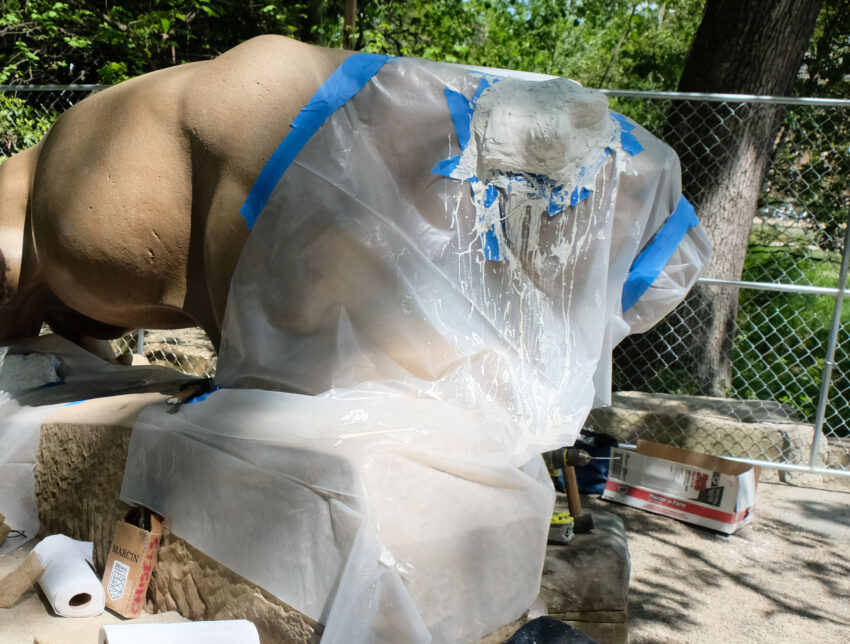
An overall cleaning of the sculpture and its base was performed next using an application of a masonry cleaner cleared with hot pressurized water; this eliminated all of the biological growth and soiling from the sculpture and the sandstone base.
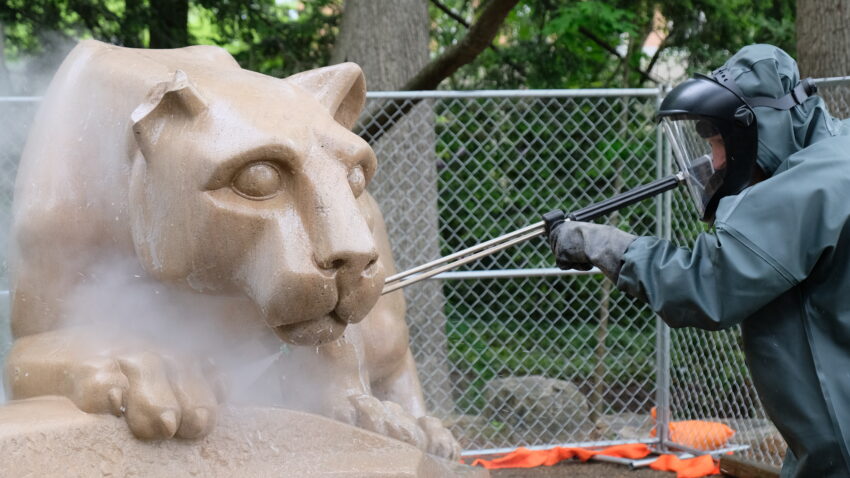
The next step of the treatment was an attempt to remove the silicone coating present on the entire surface of the limestone sculpture. Several cleaning agents and paint removers were tested to remove the silicone, but only one commercially available stripper was able to completely remove the silicone coating. All residues were again cleared with hot pressurized water. The newly cleaned surface was free of paint and silicone and green biological growth. A Hydroxylating Conversion Treatment (HCT) and finishing rinse was applied to the surface to reinforce the stone.
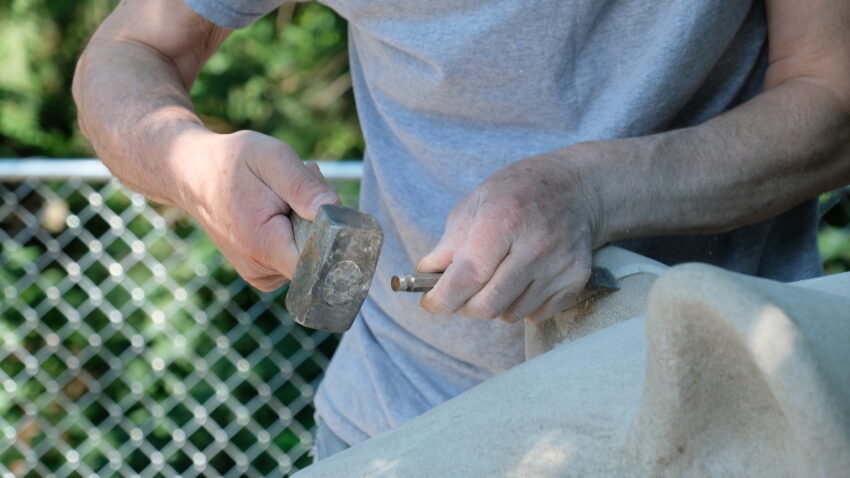
The conservation treatment of the Nittany Lion Shrine continued with replacing the ear and claws. Nicholas Fairplay recreated the missing components from stone and attached them to the sculpture. He then skillfully shaped the newly attached components and smoothed the surrounding surface to match the original texture and dimensions.
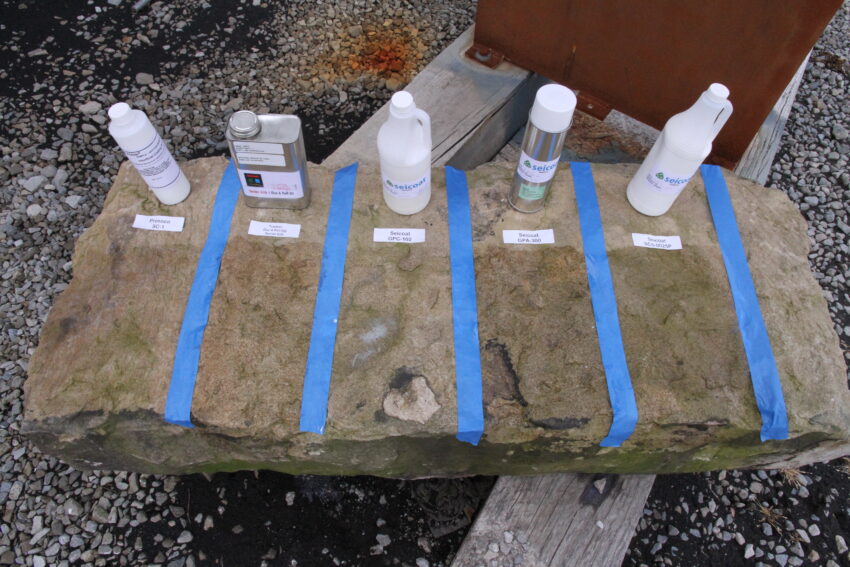
Several coatings were tested during mock-up before application to ensure they would provide protection but not change the appearance of the sculpture. The selected coating is reversible and serves as an anti-graffiti barrier, but it does require specific application parameters and maintenance. While the coating is used for many different substrates, it should only be applied to artwork by a professional conservator familiar with this type of work like the McKay Lodge Conservation team.
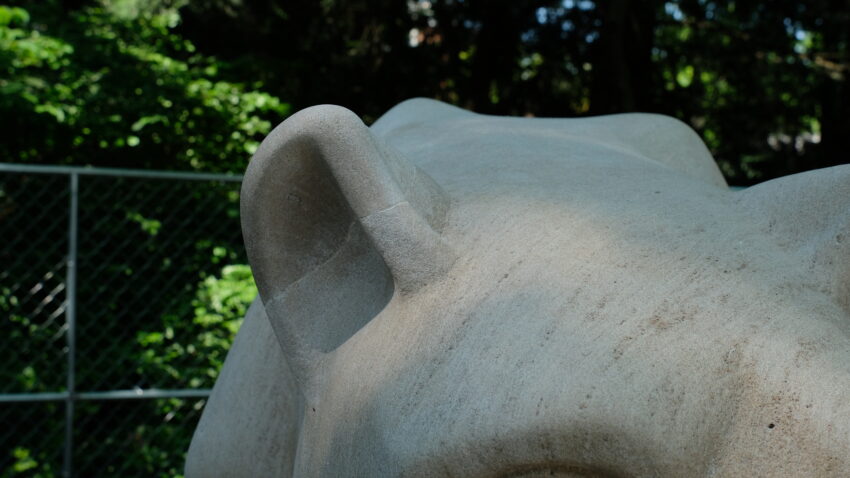
It would “be lion” to say that the appearance of the Nittany Lion Shrine had not greatly improved after its recent conservation treatment. The surface now has the look and color of the natural limestone, it is free of biological growth, and the missing or damaged components are now intact. In addition, the new sacrificial coating acts as a barrier to mitigate any future instances of graffiti.
